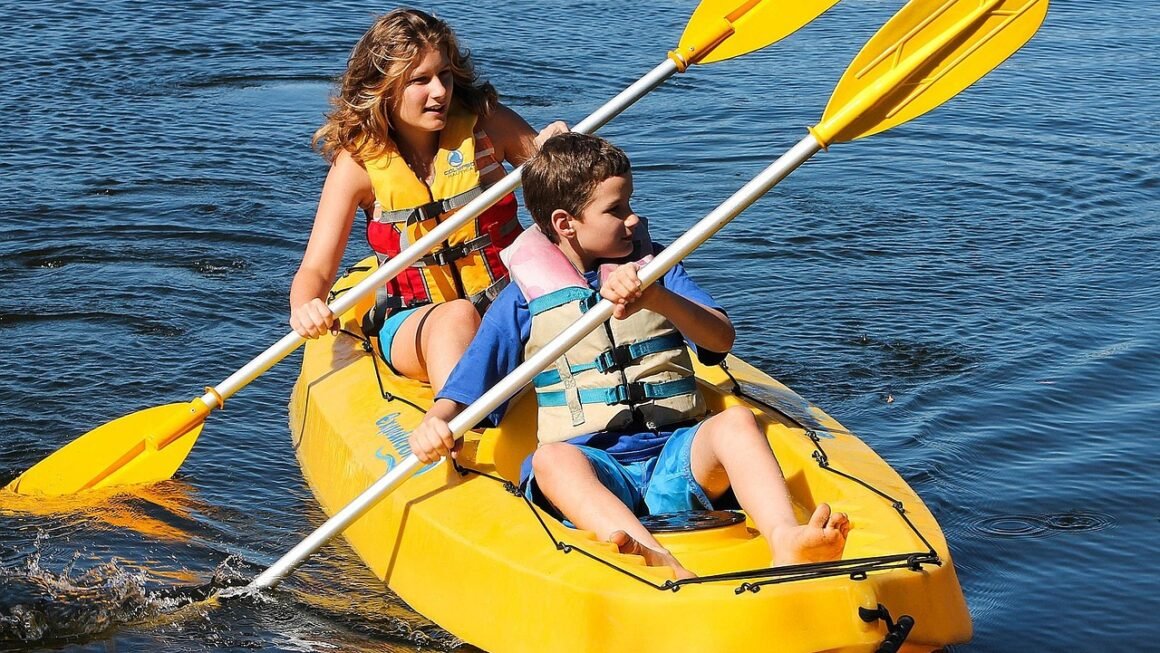Rock climbing is an exhilarating activity that challenges both the body and mind. More than just a sport, it’s a journey of self-discovery, pushing personal limits, and connecting with nature in a profound way. Whether you’re a seasoned climber scaling towering cliffs or a beginner just starting to learn the ropes, the world of rock climbing offers something for everyone. This comprehensive guide will cover the basics, delve into different climbing styles, and provide valuable tips to help you embark on your own climbing adventure.
Getting Started with Rock Climbing
Understanding the Basics
Before you even think about scaling a wall, it’s crucial to understand the foundational elements of rock climbing. This includes the essential gear, basic techniques, and safety protocols.
- Essential Gear:
Climbing Shoes: Specialized shoes with sticky rubber soles designed for grip. Start with a comfortable, all-around shoe when beginning.
Harness: A secure and adjustable harness is vital for attaching to ropes and belay devices.
Belay Device: Used by the belayer to control the rope and catch the climber in case of a fall.
Locking Carabiners: Strong metal clips used to connect various pieces of equipment.
Chalk Bag & Chalk: Helps to absorb sweat and improve grip.
- Basic Techniques:
Footwork: Placing your feet precisely is key to efficient climbing. Focus on using your toes and edging techniques.
Body Positioning: Maintaining balance and keeping your weight over your feet is crucial.
Hand Holds: Learning to identify different types of holds (crimps, jugs, slopers) and how to use them effectively.
- Safety First:
Always climb with a partner: Never climb alone, especially outdoors.
Double-check your partner: Before starting, confirm the harness, belay device, and rope are properly connected.
Communicate clearly: Use standard climbing calls (“On belay?”, “Belay on!”, “Climbing!”, “Take!”, “Falling!”) to avoid misunderstandings.
Indoor vs. Outdoor Climbing
The choice between climbing indoors at a gym and venturing outdoors onto natural rock faces depends on your experience level, goals, and available resources.
- Indoor Climbing:
Pros: Controlled environment, readily available instruction, diverse routes, convenient location.
Cons: Can feel artificial, lacks the scenic beauty of outdoor climbing.
Example: Many gyms offer introductory courses covering basic techniques and safety.
- Outdoor Climbing:
Pros: More challenging and rewarding, immersive experience in nature, diverse rock formations.
Cons: Requires more experience and specialized gear, weather dependent, potential hazards (loose rock, wildlife).
Example: Popular outdoor climbing destinations include Yosemite National Park (California), Red Rock Canyon (Nevada), and the Shawangunk Mountains (“The Gunks”) in New York.
- Actionable Takeaway: Start with indoor climbing to build a solid foundation of technique and safety skills before venturing outdoors.
Different Styles of Rock Climbing
Rock climbing isn’t a one-size-fits-all activity. Different styles cater to varying skill levels, preferences, and physical abilities.
Bouldering
Bouldering involves climbing short, challenging problems (sequences of moves) close to the ground without the use of ropes.
- Key Features:
Climbing without ropes or harnesses
Focus on power, technique, and problem-solving
Landing pads (crash pads) are used for safety
Typically done on boulders or short indoor walls
- Example: V grades are used to rate the difficulty of boulder problems, ranging from V0 (easiest) to V16 (extremely difficult).
Top-Roping
Top-roping is ideal for beginners and emphasizes safety. The rope is already anchored at the top of the route, minimizing the distance of potential falls.
- Key Features:
The rope runs from the climber, through an anchor at the top, and back down to the belayer.
Relatively safe and beginner-friendly
Excellent for learning basic climbing techniques
- Example: Many indoor climbing gyms offer top-roping routes suitable for all skill levels.
Lead Climbing
Lead climbing is a more advanced style where the climber clips the rope into quickdraws (connectors) along the route as they ascend. This requires placing protection and managing the rope, making it more physically and mentally demanding.
- Key Features:
Climber clips into protection points as they ascend.
Falls can be longer and more dynamic than in top-roping.
Requires experience, confidence, and good judgment.
- Example: Sport climbing and traditional climbing are both forms of lead climbing, but they differ in how the protection points are placed (pre-bolted vs. climber-placed).
- Actionable Takeaway: Experiment with different climbing styles to find what you enjoy most and what best suits your abilities and goals.
Improving Your Climbing Performance
Strength and Conditioning
Rock climbing engages nearly every muscle group in your body. Targeted training can significantly improve your strength, endurance, and overall climbing performance.
- Finger Strength: Crucial for holding onto small holds.
Exercises: Hangboarding, campus boarding, grip strengtheners.
Example: Start with dead hangs on a hangboard, gradually increasing the duration and decreasing the hold size.
- Core Strength: Provides stability and control on the wall.
Exercises: Planks, leg raises, Russian twists.
Example: Aim for 3 sets of planks, holding each for at least 30 seconds.
- Pulling Strength: Essential for pulling your body up the wall.
Exercises: Pull-ups, rows, lat pulldowns.
Example: Work towards being able to do multiple sets of pull-ups with good form.
- Endurance Training: Improves your ability to climb for longer periods.
Exercises: Circuit training, climbing laps on easy routes.
Example: Do 3-5 laps on a route that is significantly below your hardest grade.
Mental Game
Rock climbing is as much a mental challenge as it is a physical one. Developing a strong mental game can help you overcome fear, stay focused, and perform at your best.
- Visualization: Mentally rehearse the climb before you start. Visualize yourself executing each move successfully.
- Positive Self-Talk: Replace negative thoughts with positive affirmations.
- Focus on the Present: Concentrate on the move in front of you, rather than worrying about the difficulty of the entire route.
- Acceptance: Acknowledge that you will sometimes fail, and learn from your mistakes.
- Actionable Takeaway: Incorporate specific climbing-related exercises into your workout routine and consciously work on improving your mental resilience.
Choosing the Right Climbing Gym
A good climbing gym can make all the difference in your climbing journey. Here’s what to look for:
Route Variety and Setting
- Diverse Routes: A good gym will offer a wide range of routes with varying difficulty levels and climbing styles.
- Regular Route Setting: Routes should be reset frequently to provide fresh challenges and prevent stagnation.
- Creative Route Setting: Look for routes that are thoughtfully designed and encourage creative movement.
Facilities and Amenities
- Bouldering Area: A dedicated bouldering area with a variety of problems and crash pads.
- Top-Rope Walls: Ample top-rope walls with auto-belay devices for solo practice.
- Lead Climbing Walls: Areas specifically designed for lead climbing with bolted routes.
- Training Area: A space with hangboards, campus boards, and other training equipment.
- Amenities: Showers, lockers, and a pro shop can enhance your experience.
Instructors and Community
- Qualified Instructors: Knowledgeable and experienced instructors who can provide guidance and instruction.
- Classes and Workshops: A variety of classes and workshops for all skill levels.
- Community Events: Social events and competitions that foster a sense of community.
- Example: Check online reviews, visit several gyms, and talk to other climbers to get recommendations.
- Actionable Takeaway: Choose a climbing gym that provides a supportive environment, diverse routes, and opportunities for growth.
Conclusion
Rock climbing is a challenging yet rewarding activity that offers physical and mental benefits. By understanding the basics, exploring different climbing styles, improving your strength and conditioning, and choosing the right climbing gym, you can embark on a fulfilling climbing adventure. Whether you’re aiming to conquer towering peaks or simply enjoy the thrill of scaling a wall, the world of rock climbing has something for everyone. So gear up, get out there, and start climbing!



